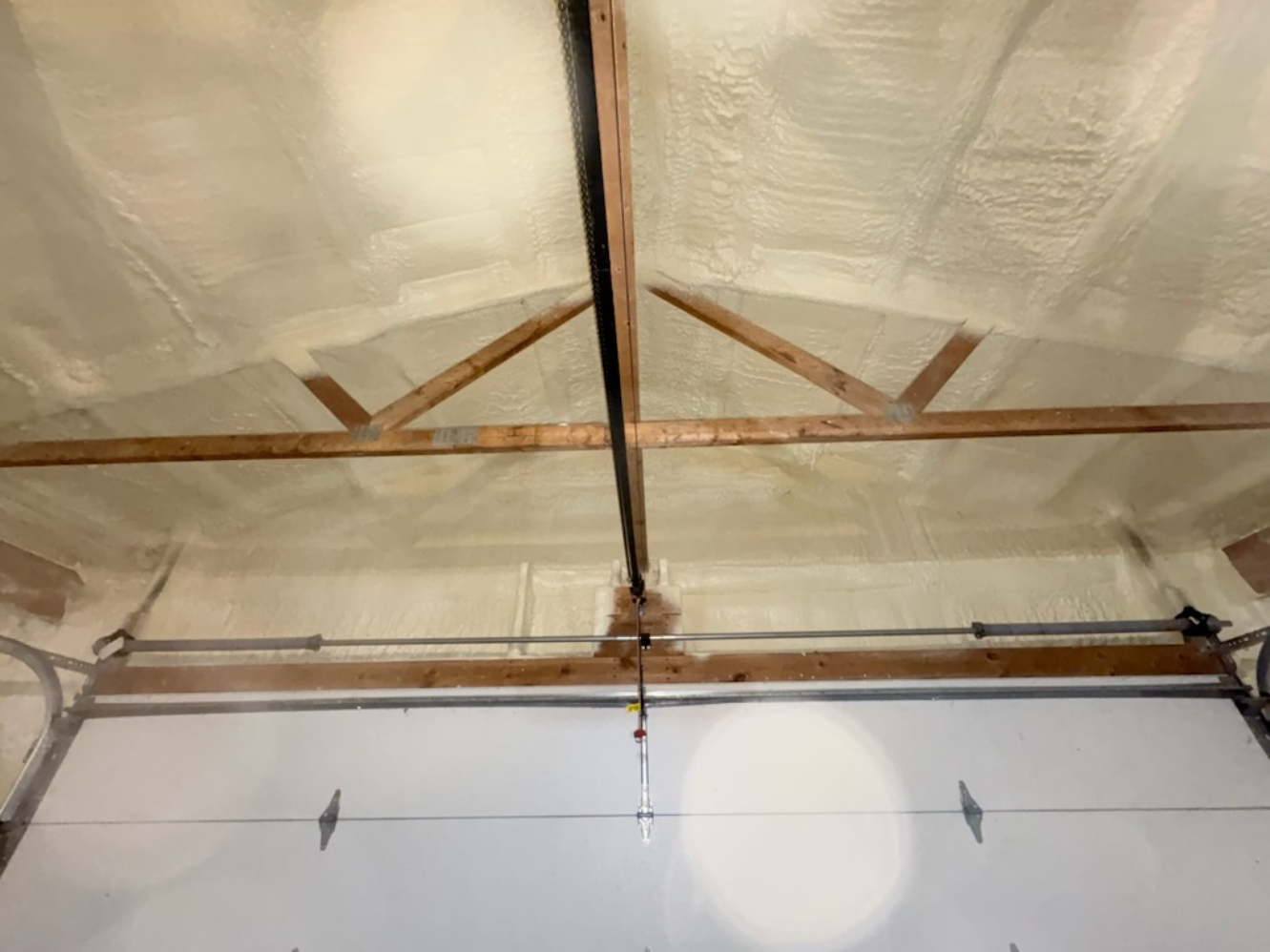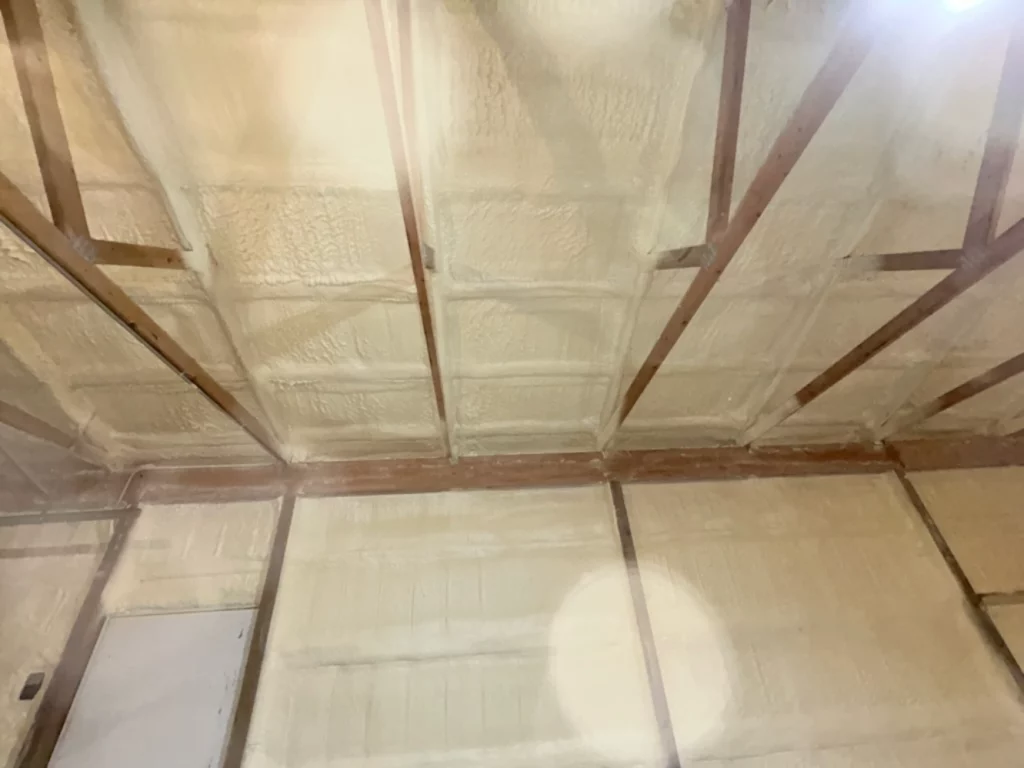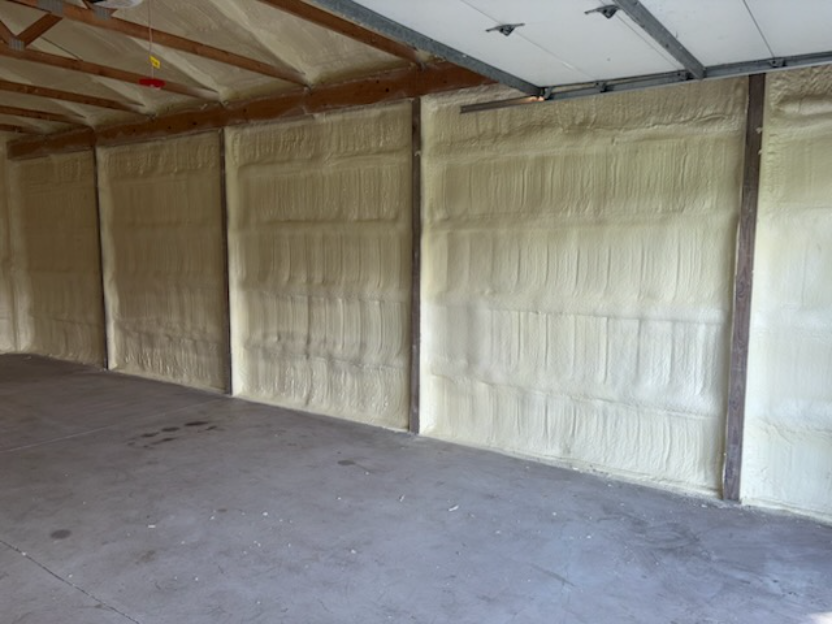
If you’ve ever stared at a skyrocketing energy bill or shivered through another drafty winter, you know how frustrating poor insulation can feel. Your home or business should be a comfortable haven, not a battleground against the elements. That’s where spray foam insulation comes in. This material expands to fill cracks and gaps, creating an airtight seal that locks in warmth and keeps out moisture. Unlike traditional options, it doesn’t just slow down air leaks; it stops them cold.
Spray foam insulation has gained popularity for good reason. It offers superior energy efficiency, which can cut heating and cooling costs by up to 50% in some cases. Beyond savings, it adds structural strength, reduces noise, and even helps with pest control by sealing entry points. Whether you’re building new, renovating an older structure, or just looking to upgrade, understanding spray foam can transform how you approach insulation.
This guide draws from years of hands-on work installing and advising on insulation solutions across various projects. You’ll walk away with a solid grasp of everything from the basics to advanced considerations. Here’s what lies ahead:
By the end, you’ll have the knowledge to make informed decisions and potentially save thousands over time. Let’s get started.
Spray foam insulation starts as a liquid mixture of two chemicals: polyol resin and isocyanate. When a technician mixes and sprays them through a gun, they react and expand rapidly—up to 100 times their original volume—into a foam that hardens quickly. This process seals irregular spaces that rigid boards or batts often miss.
The material adheres to most surfaces, from wood to concrete, forming a continuous barrier. Unlike fiberglass, which can sag or compress, spray foam maintains its shape and effectiveness for decades. It comes in open-cell and closed-cell varieties, each with unique properties we’ll cover later.
Why does this matter? In a typical home, up to 40% of conditioned air escapes through leaks. Spray foam addresses this by expanding into nooks and crannies, creating an envelope that keeps indoor air where it belongs. According to the U.S. Department of Energy, proper insulation like this can reduce utility bills significantly while improving indoor air quality.
Early versions of spray foam appeared in the 1930s, but modern formulations are safer and more efficient. Today, it’s used in everything from residential attics to industrial roofs. If you’re dealing with an older building, this could be the upgrade that modernizes your space without major reconstruction.
Now that you understand the basics of spray foam, let’s explore why it’s a top choice for insulation.
You might wonder if spray foam lives up to the hype. The answer is yes, especially when you consider its impact on daily life and finances. Start with energy savings: homes with spray foam often use 20-30% less energy for heating and cooling. A study by the Oak Ridge National Laboratory confirmed that spray foam provides better thermal resistance than many alternatives, leading to consistent comfort year-round.
Comfort is another big win. The airtight seal minimizes drafts, so you won’t feel hot spots or cold zones. It also blocks outside noise—think fewer sounds from traffic or neighbors—which makes your space feel more peaceful. For allergy sufferers, spray foam reduces dust and pollen infiltration, creating a cleaner environment.
Durability sets it apart too. Once installed, it resists settling, mold, and pests. Closed-cell foam, in particular, adds rigidity to walls, potentially increasing a building’s strength against wind or impacts. Environmentally, while production uses chemicals, the long-term reduction in energy use lowers your carbon footprint.
Market data backs this up. The global spray foam insulation market reached $2.5 billion in 2022 and is projected to grow at 6.5% annually through 2030, driven by demand for energy-efficient buildings, per a report from Grand View Research.
Don’t overlook moisture control. Spray foam’s structure prevents water absorption, reducing risks of rot or structural damage in humid areas. Overall, these benefits add up to a smarter investment for anyone serious about efficiency.
Expert Tip: Before committing, calculate your potential savings using online energy audit tools. They factor in your local climate and home size for a personalized estimate.
Key Takeaways:
[Link to: Detailed Guide on Energy Savings with Insulation]
Not all spray foam is the same. The two main types—open-cell and closed-cell—differ in density, cost, and performance, so choosing the right one depends on your needs.
Open-cell foam is lighter, with an R-value around 3.5 to 4 per inch. It expands more, making it cost-effective for filling large areas. This type allows some air and moisture to pass through, which can make spaces feel less stuffy. It’s ideal for soundproofing because it absorbs noise well. However, it doesn’t provide much structural support and isn’t suitable for below-grade applications where water exposure is a concern.
Closed-cell foam, denser at about 2 pounds per cubic foot, boasts a higher R-value of 6 to 7 per inch. Its cells are sealed, blocking air and moisture completely. This makes it stronger, acting like a vapor barrier and adding rigidity to surfaces. It’s pricier upfront but excels in wet climates or where you need maximum efficiency. For example, in coastal homes, closed-cell prevents humidity from causing issues.
A third option, medium-density closed-cell, splits the difference, offering good insulation with some flexibility.
Here’s a quick comparison:
| Type | R-Value per Inch | Density | Best For | Cost (per sq ft) |
|---|---|---|---|---|
| Open-Cell | 3.5-4 | Low | Interiors, soundproofing | $0.50-$1.00 |
| Closed-Cell | 6-7 | High | Exteriors, moisture areas | $1.00-$2.00 |
| Medium-Density | 5-6 | Medium | Versatile applications | $0.75-$1.50 |
Data from the Spray Polyurethane Foam Alliance shows closed-cell outperforming in humid environments, while open-cell shines in dry, interior spots.
Expert Tip: Test a small area first if you’re unsure. Professionals can apply a sample to see how it performs in your specific setup.

Spray foam adapts to almost any building type, making it versatile for residential, commercial, and even agricultural projects.
In homes, it’s commonly used in attics to prevent heat loss—up to 25% of a home’s energy escapes through the roof, notes the U.S. Energy Information Administration. Rim joists and crawl spaces benefit from its sealing power, stopping cold air from seeping in. For walls, it fills cavities without the hassle of cutting batts.
This versatility extends to commercial settings as well, where large-scale benefits are even more pronounced, as evidenced by market trends.
Commercial buildings, like warehouses or offices, use it on large roofs and walls to maintain steady temperatures. It reduces HVAC loads, which can save businesses thousands annually. One market stat: Commercial insulation demand is expected to hit $15 billion by 2027, with spray foam capturing a growing share, according to MarketsandMarkets.
For roofs, spray foam creates a seamless layer over irregular surfaces, ideal for retrofits. Under-slab applications insulate foundations, preventing frost heave in cold regions. Even in barns or greenhouses, it controls humidity without chemicals.
[Link to: In-Depth Look at Attic Insulation Options]
Consider your climate: In hot areas like the Southwest, closed-cell on exteriors keeps heat out. In the Midwest, open-cell interiors handle temperature swings.
Installing spray foam isn’t a DIY job— it requires certified pros with proper equipment to handle the chemicals safely. Here’s how it typically unfolds.
First, preparation: Clear the area, cover vents, and seal off living spaces with plastic sheeting to contain overspray. Inspect for moisture or damage; fix issues before proceeding.
Next, surface priming: Clean and dry surfaces ensure adhesion. For attics, lay down baffles to maintain ventilation paths.
The spraying phase: Technicians wear protective gear and use a rig with heated hoses to keep the mix liquid. They start at the farthest point, working backward in layers of 2-3 inches to avoid uneven expansion. Open-cell goes on faster due to greater expansion.
Curing happens quickly—usually 24 hours for full hardness. Then, trim excess and ventilate the space to clear any odors.
Safety is key: Follow EPA guidelines on ventilation and worker training. Post-install, check for gaps with a thermal camera.
Expert Tip: Schedule during mild weather. Extreme cold or heat can affect expansion, leading to suboptimal results.
[Link to: Professional Installation Checklist for Homeowners]
Key Takeaways:
The process might seem involved, but it pays off in performance that lasts.
To see spray foam’s edge, stack it against common alternatives like fiberglass, cellulose, and rigid foam boards.
Fiberglass batts are cheap and easy to install but settle over time, losing effectiveness. They don’t seal air leaks well, allowing 50% more energy loss than spray foam in tests by the Building Science Corporation.
Cellulose, blown-in from recycled paper, fills gaps better but absorbs moisture, risking mold. Its R-value drops when wet, unlike spray foam’s stability.
Rigid boards offer high R-values but require precise cutting for irregular spaces, often leaving voids. They’re also flammable without covers.
Spray foam wins on air sealing and longevity, though initial costs are higher—$1-3 per sq ft vs. $0.50 for batts. Over 10 years, savings often offset this.
| Insulation Type | Air Sealing | Moisture Resistance | Installation Ease | Lifespan |
|---|---|---|---|---|
| Spray Foam | Excellent | High | Pro only | 25+ years |
| Fiberglass | Poor | Low | DIY possible | 10-20 years |
| Cellulose | Good | Medium | Pro recommended | 15-25 years |
| Rigid Boards | Fair | Varies | Moderate | 20+ years |
This table highlights why spray foam suits demanding applications.
[Link to: Cost-Benefit Analysis of Insulation Types]
No insulation is perfect, but most spray foam issues stem from poor installation or mismatched types.
Off-gassing odors can linger if ventilation is inadequate. Solution: Use low-VOC products and air out for a week post-install.
Over-expansion in tight spaces? Pros calculate volumes precisely and use slower-rising foams.
Cost concerns: It’s more expensive upfront, but rebates from programs like ENERGY STAR can cut 10-30% off. Check local incentives.
For older homes, compatibility with existing materials matters. Test adhesions and ensure no asbestos risks.
Moisture in walls during install can cause improper curing—always dry surfaces first.
Expert Tip: Get multiple quotes and verify certifications. Look for SPFA members to ensure quality work.
[Link to: Troubleshooting Common Insulation Problems]
Addressing these early prevents headaches down the line.
The real appeal of spray foam lies in its lasting impact. Expect 25-50 years of performance with minimal maintenance, far outpacing batts that degrade in a decade.
ROI calculations show payback in 3-7 years through energy savings. For a 2,000 sq ft home, that’s $500-1,000 annual reductions, per Home Energy Magazine. Add property value: Insulated homes sell 5-10% higher.
It also future-proofs against rising energy costs. With utilities up 4% yearly, efficient homes stay affordable.
Track success with utility bills and home energy audits. Tools like blower door tests measure air tightness improvements.
One stat: Buildings with advanced insulation like spray foam reduce CO2 emissions by 30%, aiding sustainability goals from the International Energy Agency.
Investing here builds equity in comfort and efficiency.

Building on its proven benefits, the future of spray foam promises even greater innovations.
Advancements are making spray foam even better. Bio-based foams reduce reliance on petroleum, with companies developing plant-derived options that match performance.
Smart integrations, like foams with embedded sensors for moisture detection, are emerging. This could alert owners to issues early.
Regulations push greener builds; by 2030, many codes will require high-efficiency insulation, boosting spray foam’s role.
Recyclability improves too—some new formulas break down without environmental harm.
[Link to: Emerging Trends in Home Insulation Technology]
[Link to: Sustainable Building Materials Guide]
Stay ahead by watching industry updates; the shift toward efficiency will only accelerate.
Yes, when installed by trained professionals. Modern foams use low-toxicity chemicals that off-gas minimally after curing. The EPA rates them safe for occupied spaces, but ventilate during and after install for 24-72 hours.
Expect $1-3 per square foot installed, higher than fiberglass ($0.50-$1.50) but lower long-term due to savings. Factors like thickness and type affect price; get quotes for accuracy.
No, it’s not recommended. The chemicals require specialized equipment and safety protocols to avoid health risks or poor results. Hire certified contractors for best outcomes.
Absolutely, especially open-cell. It absorbs sound waves, reducing noise transmission by up to 80% in walls, making it great for home theaters or busy areas.
It varies: 30-49 for northern attics, 30-60 for walls. Use the DOE’s zone map to determine your needs; spray foam achieves high values efficiently.
Proper install includes ventilation planning. It seals leaks but pairs with systems like HRVs to maintain fresh air flow, preventing stuffiness.
You’ve now covered the essentials of spray foam—from its sealing power and types to installation and future potential. The key is selecting the right type for your space, ensuring professional install, and tracking your energy use to see results.
This guide equips you to evaluate options confidently. Refer back as you plan your project; whether retrofitting or building new, spray foam delivers comfort and savings that endure.
Start by assessing your current setup with a home audit. Then, explore rebates and connect with experts to move forward.
For personalized advice on spray foam insulation tailored to your property, reach out to South Chicago Insulation. Their team offers free consultations to discuss your needs. Contact them at [email protected] or call (779) 803-8025. With local experience in the Chicago area, they can guide you through selection and installation for lasting results.